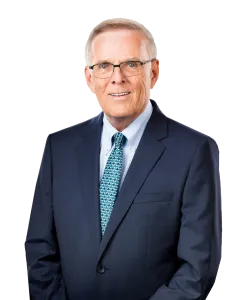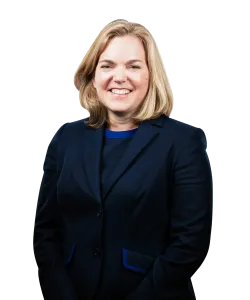HGPII Reports on GPO’s Role in Saving the Health Care Supply Chain From COVID-19
On Wednesday, January 13th, the Healthcare Group Purchasing Industry Initiative (HGPII) released its 15th Annual Report. This milestone assessment of the healthcare supply chain focuses on issues raised by the pandemic, the market distortions created by the shortages, grey market activity, as well as demands within the industry for improved analytics.
In 2005, HGPII was established by nine major healthcare group purchasing organizations (GPOs) that pledged to adopt and implement a set of principles for business ethics and conduct. These best practices are shared at the HGPII Annual Forum and independently evaluated annually with the HGPII Annual Report.
In early 2020, the beginning of the COVID-19 pandemic showed a health care supply chain tested by a lack of medical-grade masks and a demand for ventilators in emergency departments outpacing supply. The HGPII Annual Report clearly shows that the nation’s group purchasing organizations (GPOs) role in securing the supply chain was significant.
In conducting interviews and reviewing the questionnaire each member submitted, we are able to conclude:
- GPOs have been a valuable source of support and expertise for public officials, member healthcare providers, and communities on a range of issues raised by the pandemic.
- GPOs were also able to offer protection to buyers of PPE products related to contractual integrity, quality, and safety of transactions. In fact, HGPII members were able to assist hospitals and long-term care providers in their efforts to obtain PPE products, evaluating factors such as risk, supplier capacity, and quality.
- HGPII members successfully adapted their existing policies and procedures to the demands of pandemic conditions. GPOs were able where necessary to move to bring new suppliers to contract on an expedited basis.
- GPOs helped with the early identification of drug and therapeutic shortages during the pandemic and assisted in their mitigation.
- Key group purchasing organizations played a critical role in developing online applications and innovative software that permitted better management of pandemic related challenges. These adaptations benefitted physicians, healthcare providers, and patients alike.
- Key industry executives took an active voluntary role in advising FEMA and the CDC in responding to supply chain developments; some also testified before Congress. Others were engaged during the crisis in assisting federal and state authorities with data and expertise that informed policy decisions.
As a result of these actions, hospitals and nursing homes in the nation obtained millions of gowns, gloves, masks, and ventilators when global demand was at its highest in 2020. The framework created by HGPII helped the industry to quickly address issues in the supply chain, provide value to members, and limit payments to fraudulent suppliers. The nation’s GPOs were well equipped with on-the-ground support and real-time supply surveillance data to coordinate a GPO-led response to the country’s medical supply needs. These existing investments in innovation, and the existence of relationships around the globe with supply experts, helped GPOs implement an early warning system for looming supply shortages at home. As the price of PPE increased and hordes of new & unproven suppliers entered the market place, there is no question that group purchasing organizations played a major role in sourcing much-needed supplies and vetting untested suppliers. GPO’s efficient logistics operations and existing relationships with international suppliers proved to be extremely effective, and allowed entities across the healthcare supply chain to focus on providing care & mitigating the spread of COVID-19 – rather than scaling infrastructure to assess the validity of new suppliers & the quality of their materials. Group purchasing organizations are solutions-oriented and strategic by nature of their design. The existing structure, which was extremely useful to governments of all types – federal, state, and local – during the early months of the COVID-19 pandemic, has developed through the years due to an absence of government over-regulation and micromanagement of the industry. As media outlets reported progress in securing sorely-needed PPE across the nation, it’s conceivable that one of the many GPOs throughout the country leveraged vast resources and infrastructure for the common good and public health. Today, as the nation continues to deal with the pandemic, GPOs continue to implement these same strategies across the marketplace in an effort to strengthen the health care supply chain.
With communities around the country still facing long-term challenges due to surges of COVID-19, we know that supply stockpiles will be challenged and that every available mask, glove, gown, and syringe will quickly move from the production plant to hospitals and nursing homes in need., Given the lessons learned in 2020, the existing medical supply chain infrastructure in place, and the emerging supply challenges facing medical facilities today, GPOs continue to work hand-in-hand with government agencies to prevent future supply shortages.
“The pandemic-related challenges to the healthcare supply chain represent a continuing challenge to health systems and medical institutions, forcing permanent changes in best practices. Our report documents the critical contribution of GPOs during the crisis, and how supply chain resiliency needs to be a priority for healthcare providers and policy makers.”– Philip S. English, HGPII National Coordinator
“Both the heroic health care workers who have been struggling to provide health care during this Covid-19 pandemic and the patients who have received that care have benefited from creative and extraordinary work done by health group purchasing organizations (GPO’s) during past year. The GPOs have played critical roles in getting scarce personal protective equipment and medical supplies into the hands of heath care providers. The severe shortages of PPE, ventilators, and more created critical bottlenecks in distribution of products. GPOs were creating early warning systems on those critical shortages and developing special logistics to get product from legitimate suppliers to where it was needed most.”– Senator Byron Dorgan, HGPII National Co-Coordinator.
Contacts
- Related Industries
- Related Practices



